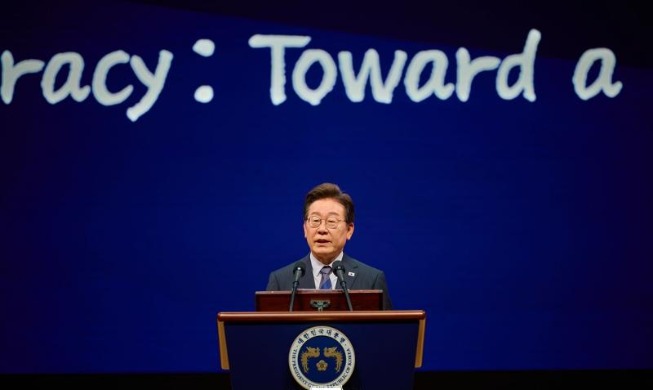
Museum-goers read old elementary school textbooks at the National Hangeul Museum on March 17. The special exhibition ‘Let’s Do It Together’ introduces the dreams of the community as shown through elementary textbooks, tracing back from liberation in 1945 until the Korea of today.
Elementary school students learn about “relationships” and “communication” with others while together with their classmates and teachers in class. Textbooks inform students how to live in harmony with others, rather than just deliver knowledge.
You can see extended forms of relationships and communication through the elementary school textbooks that form part of the special exhibition “Let’s Do It Together” at the National Hangeul Museum. Scheduled from March 17 to May 29, the exhibition tells stories of society, written mostly in Hangeul, as shown through elementary school textbooks published from before liberation and through to today.
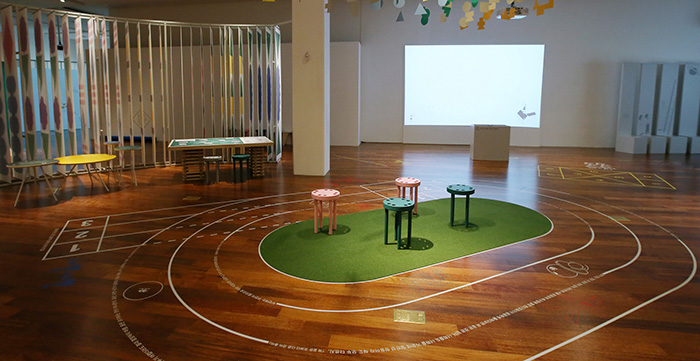
At the exhibition, visitors can enjoy a first-hand experience playing games and reading elementary school textbooks.
The exhibition is composed of two parts: “You and I” and “Becoming We.” It focuses on the growth stages of relationships, which begin with “I” and “you” and then move on to “us,” “neighbors,” “society” and “country.” All of this is shown using vocabulary and content in the textbooks. The exhibition also introduces methods of speaking, reading and writing that elementary school students practiced in order to learn poems and songs. It shows the changes in loan words written in Korean depending on the times. Museum-goers can also learn about both literacy education for the elderly and elementary-level Korean books for non-Koreans who wish to study Korean, with their practice books, videos and notebooks all on display.
Some noticeable items on display include the “Gungmin sohak dokbon” (국민소학독본, 國民小學讀本) published in 1895, the first modern elementary school textbook from late Joseon times. There's also the “Sinjeong simsang sohak” (신정심상소학, 新訂尋常小學) from 1896 which is the first elementary textbook published with drawings. The “Badugi wa Cheolsu” (바둑이 와 철수) from 1948 is the first elementary school textbook published by the Ministry of Education after the establishment of the government of the Republic of Korea. The "Joseoneo cheoljagi" (조선어 철자기) from 1936 includes spelling disks to help children learn the vowels and consonants of the Korean alphabet.
Other unique features of the exhibition include various audio-visual facilities, exhibits shaped like elementary school classrooms and a playground, all inside the museum. The venue is decorated with many drawings of girls and boys from the textbooks, boosting visitors’ curiosity. Museum-goers can also read some of the actual elementary school textbooks themselves.
“Unlike other ordinary exhibitions that concentrate on displaying artifacts, this exhibition focuses more on hands-on experiences so that visitors can do something and feel something together. It's more about the content rather than the culture or history. We also show the changes in words, expressions and vocabulary inside the textbooks,” said Moon Young-ho, director general of the National Hangeul Museum.
By Yoon Sojung
Photos: Jeon Han, The National Hangeul Museum
Korea.net Staff Writers
arete@korea.kr
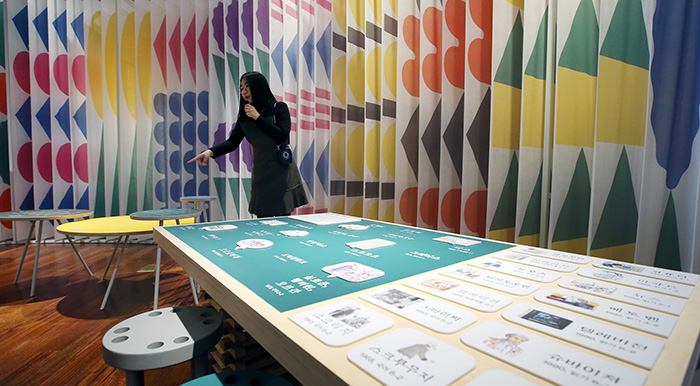
A curator explains the changes that took place in loan words written in Korean. The exhibition also explains changes in Hangeul that have taken place over the years.
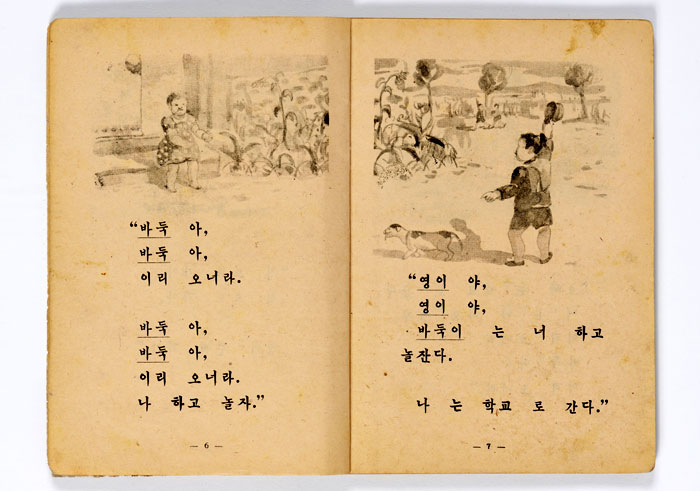
The ‘Badugi wa Cheolsu’ (바둑이 와 철수), published in 1948, is the first elementary school textbook published by the Ministry of Education after the establishment of the government of the Republic of Korea.
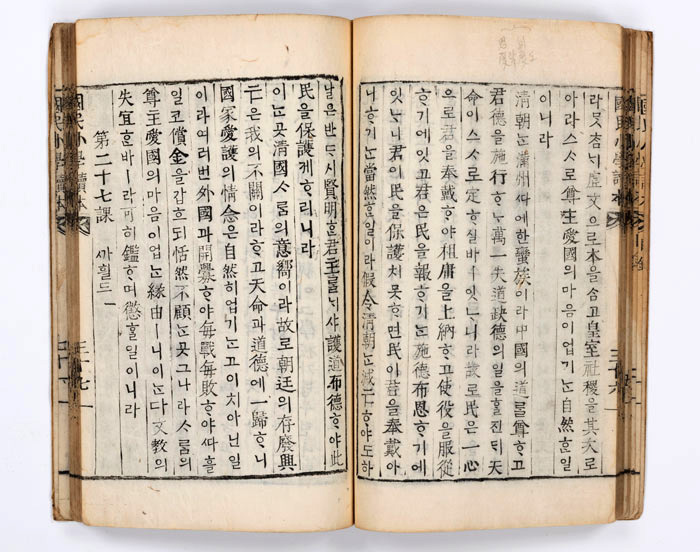
The ‘Gungmin sohak dokbon’ (국민소학독본, 國民小學讀本) from 1895 is the first modern elementary school textbook published during late Joseon times. It contains lessons about history, influential figures and knowledge required for everyday living.
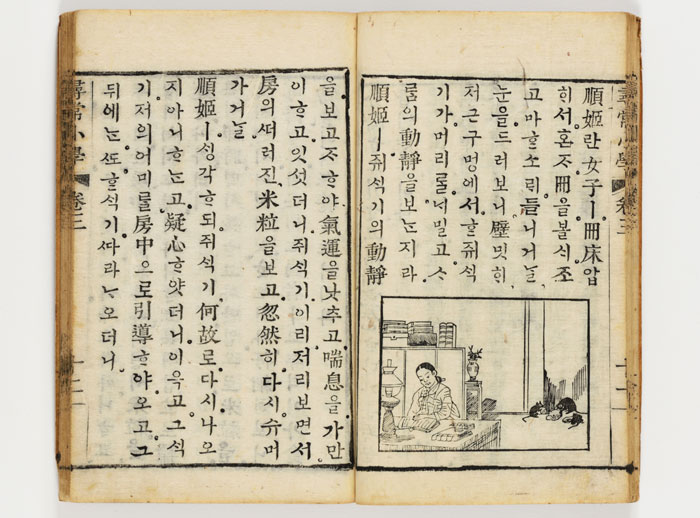
The ‘Sinjeong simsang sohak’ (신정심상소학, 新訂尋常小學) from 1896 is the first elementary textbook published with drawings, teaching the moral lessons that children are required to learn.
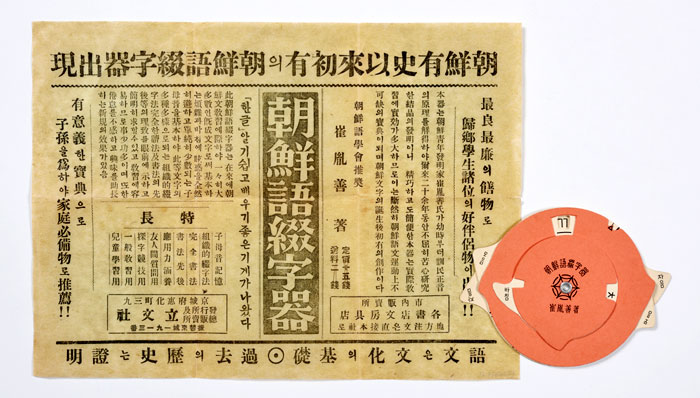
An ad for the 'Joseoneo cheoljagi' (조선어 철자기) from 1936 includes disks that were designed to help children learn the Korean alphabet. They can move each disk, written with consonants and vowels, until they line up. The leaflet says that the disks are good study material for children, as approved by the Korean Language Society (조선어학회, 朝鮮語學會).
Most popular
- Grammy-winning producer calls Suga of BTS 'amazing artist'
- 'Universal love, family' themes fuel success of 'King of Kings': director
- Council sets minimum hourly wage in 2026 at KRW 10,320
- Expansion of foreign app system raises tourist convenience
- Nat'l population diversity rose nearly 8% from 2018-22: study
